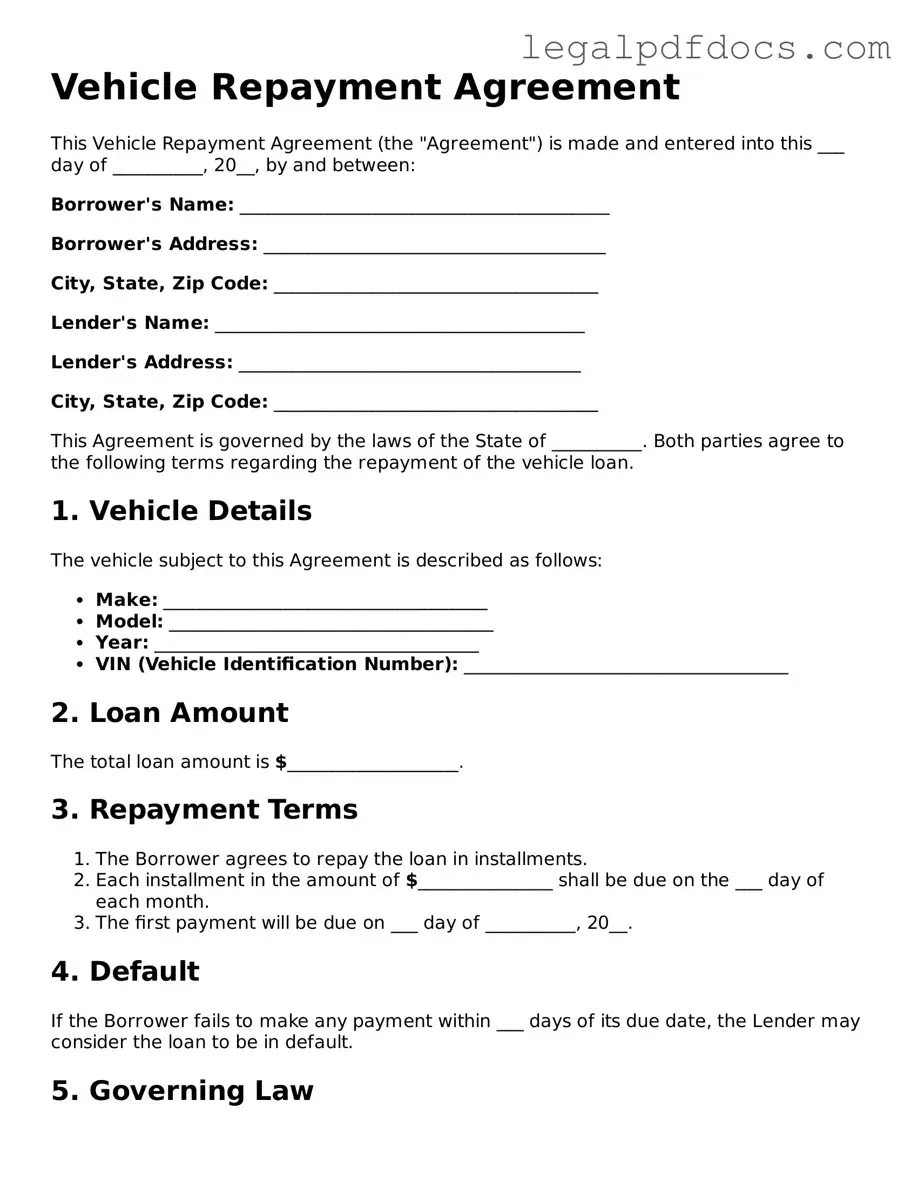Vehicle Repayment Agreement Template
The Vehicle Repayment Agreement form is a legal document that outlines the terms and conditions under which a borrower agrees to repay a loan taken out for a vehicle. This form serves to protect both the lender and the borrower by clearly defining payment schedules, interest rates, and any penalties for late payments. Understanding this agreement is crucial for anyone looking to finance a vehicle.
To ensure a smooth repayment process, consider filling out the form by clicking the button below.
Open Vehicle Repayment Agreement Editor Here
